Lecture 6: Hip, Knee, Shoulder, Lumbar Pathology
1/46
There's no tags or description
Looks like no tags are added yet.
Name | Mastery | Learn | Test | Matching | Spaced |
|---|
No study sessions yet.
47 Terms
Hip
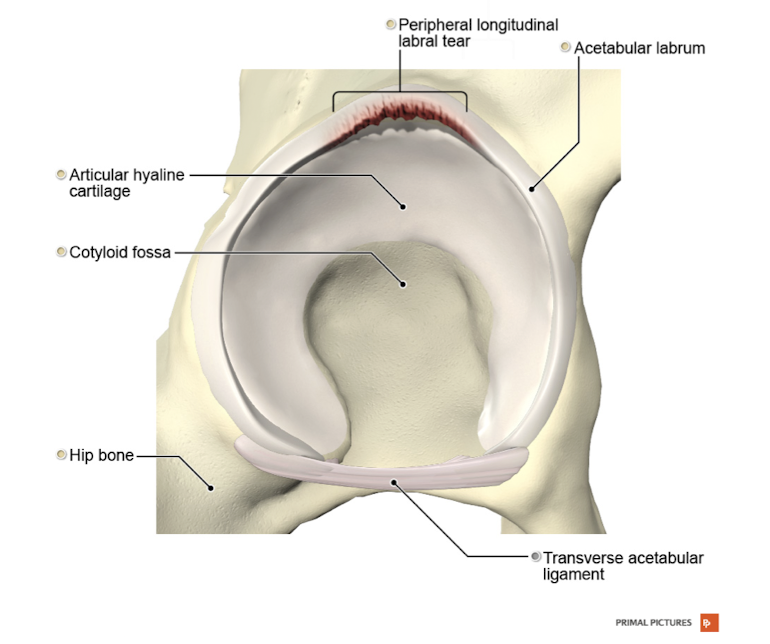
Labral Tear: MOI
What are the 2 main types of MOI for a Labral Tear?
What is MC pop for Labral Tear?
Acute Vs Degenerative
Pop: Younger
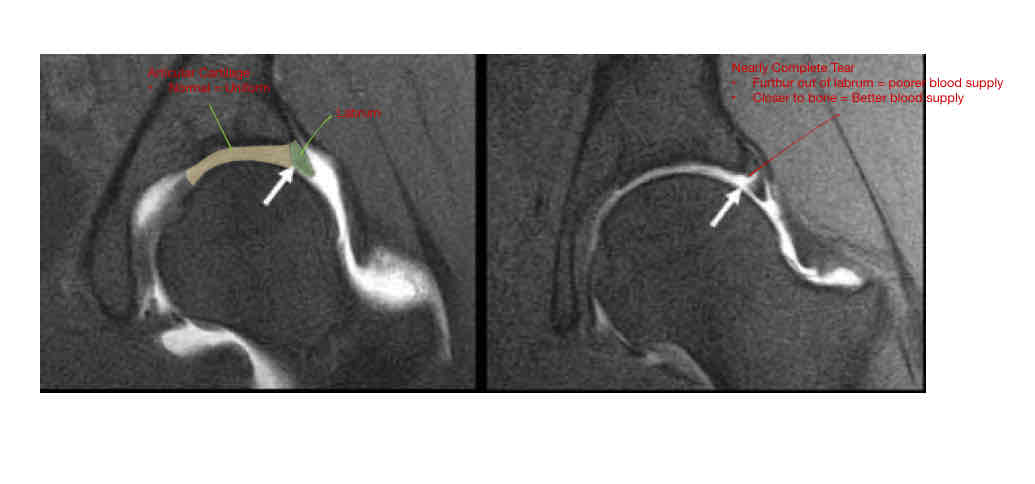
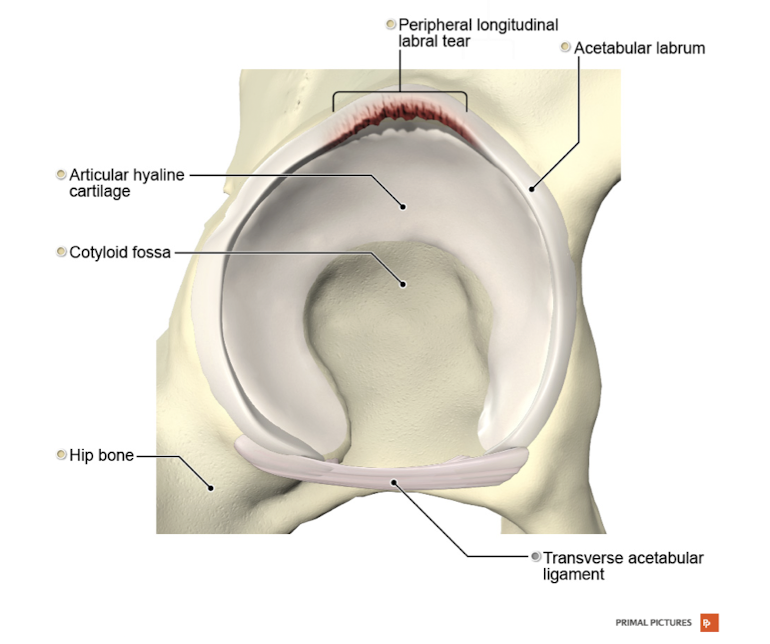
Labral Tear: MOI
What are the 3 main Degenerative MOIs?
Repetitive Movement
Golf
Ballet
Football
Hockey
Trauma
OA
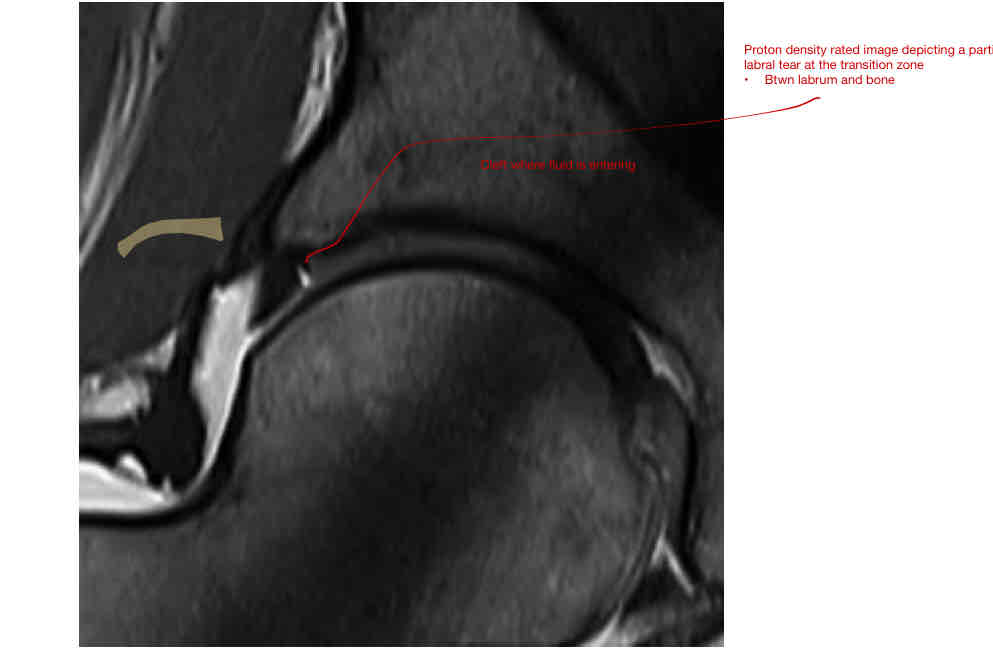
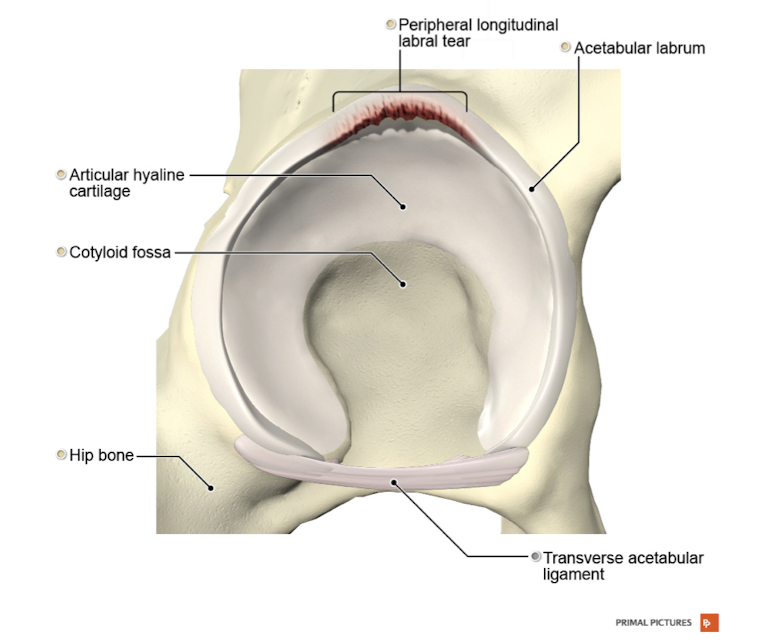
Labral Tear: MOI
What does OA Correlation mean?
Labral Tear = Degeneration
OR
Degeneration = Labral Tear

Labral Tear: S/S
What are the 4 main S/S of Labral Tear?
What are the 3 most painful positions?
S/S
Hip and Groin Pain (90%)
Increased w activity
Slicking/Popping
Giving Way
Stiffness
Pnful Positions
Flexion
Adduction
IR
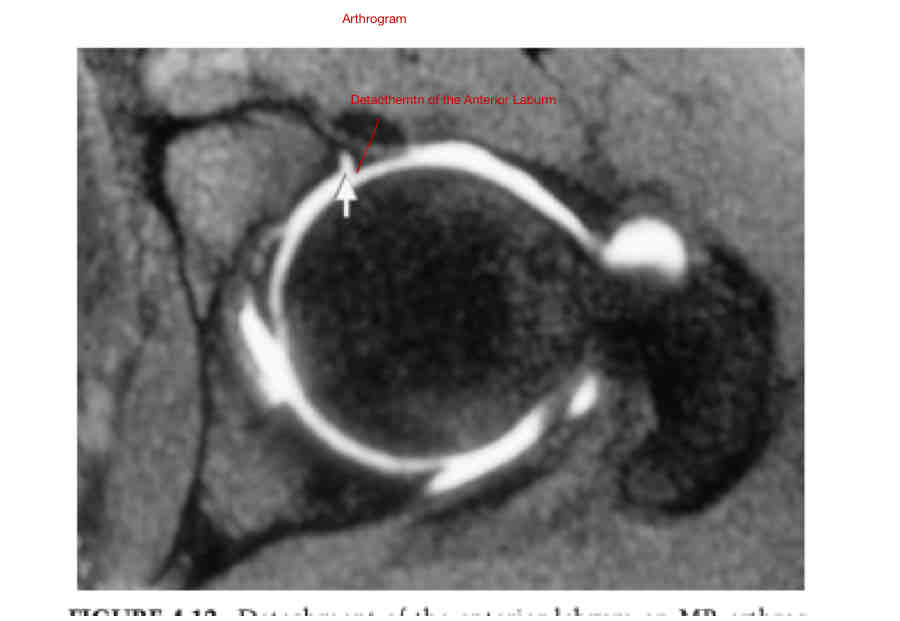
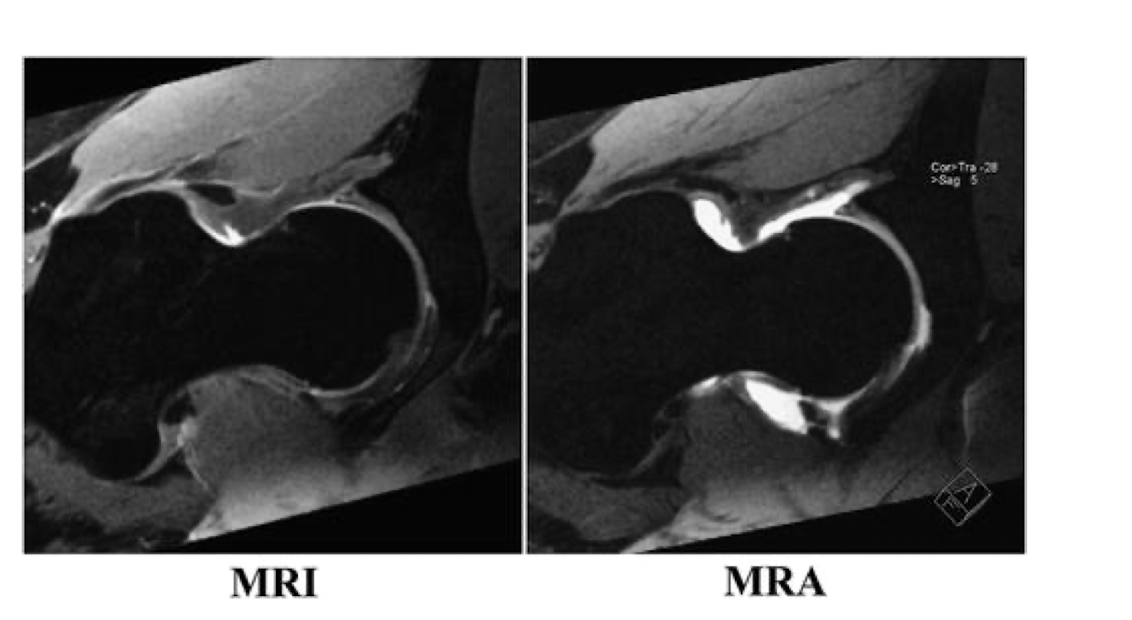
Labral Tear: Diagnosis
What are the 2 main imaging techniques to diagnose a Labral Tear?
What does an MRA acquire?
MRI
Magnetic Resonance Imaging
MRA
Magnetic Resonance Arthography
MRA requires:
Injection of fluid to see tear of labrum
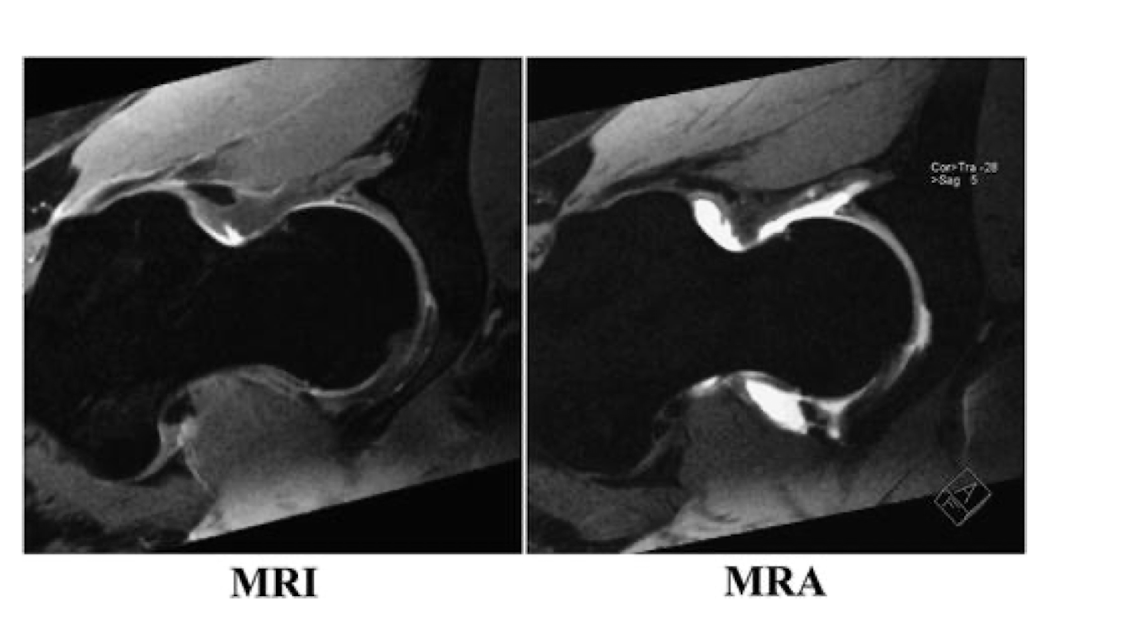
Labral Tear: Diagnosis
An MRI is MORE sensitive than what?
An MRA is MORE sensitive than what?
MRI
Other non invasive imaging techniques (85-90%)
MRA
MRI but more risks (92%)
Pain and Infection
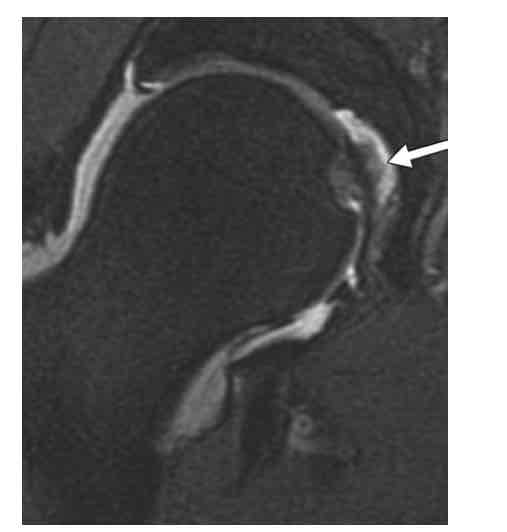
Ligamentum Terres Tear: MOI
What are the 4 main MOI?
Fall into end range hip motion (trauma)
Hip dislocation
Ballet
Gymnastics
OA
OA » Instability » Tearing of Lig
OR
Tearing of Lig » Instability » OA
FAI


Ligamentum Teres Tear: S/S
4 main S/S
Groin pain
Increased w activity
Clicking/Popping
Giving Way
Stiffness


Ligamentum Teres Tear: S/S
What activities would this pt complain of having difficulty doing?
3
Stars
Sitting in Low Chairs
Driving
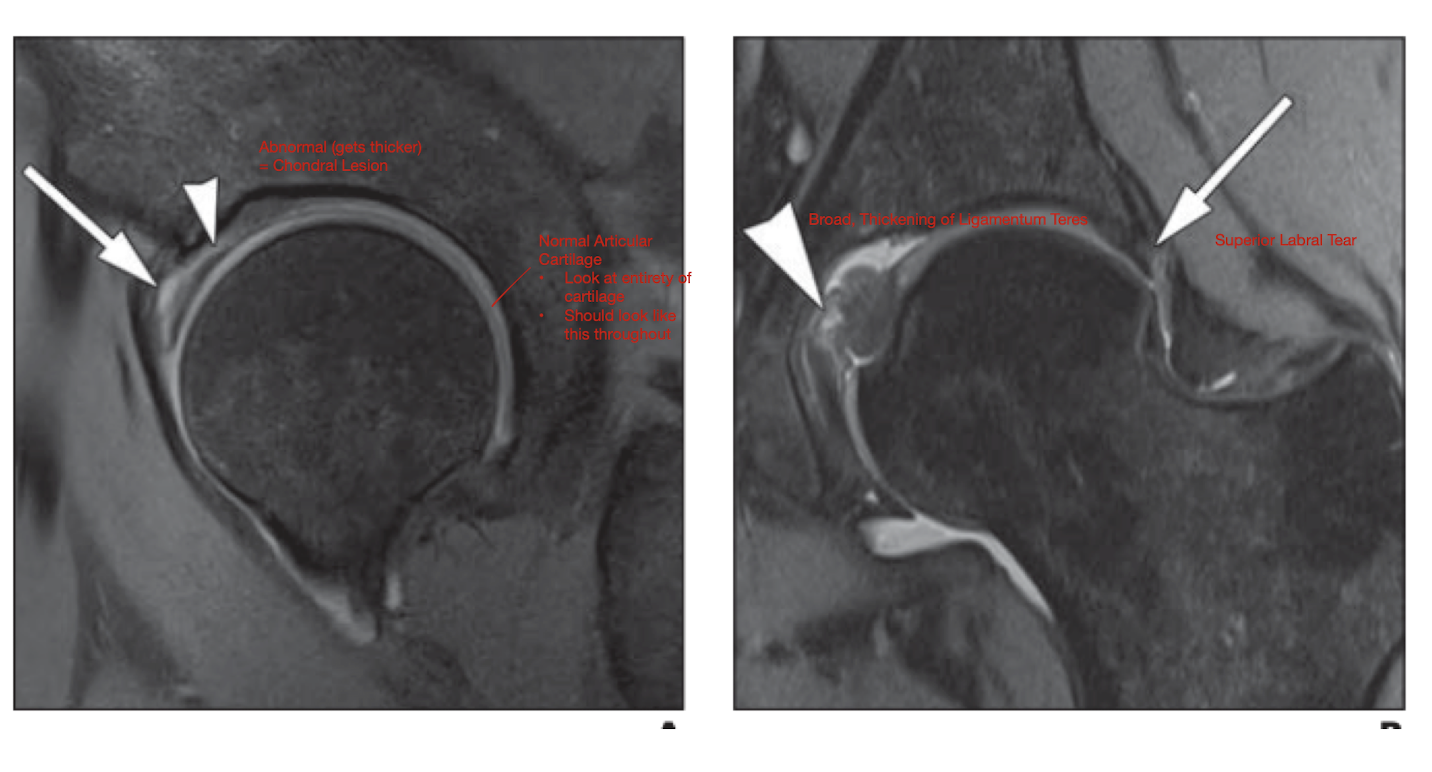
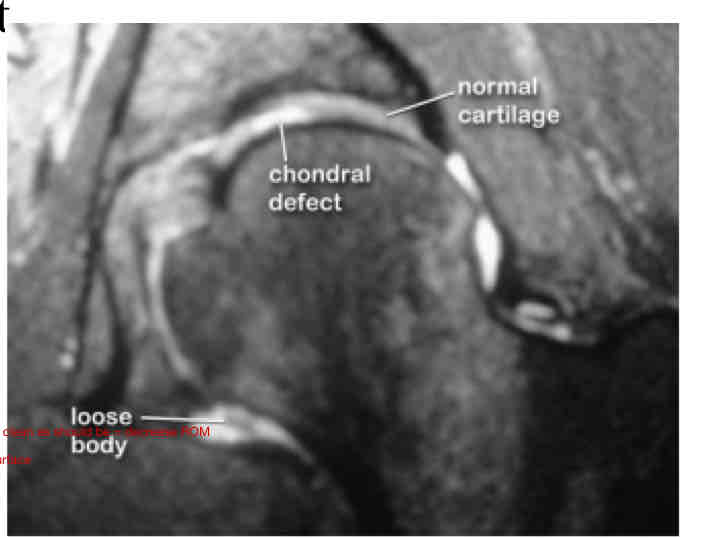
Chondral Defect: MOI
What are the 6 main MOI for Chondral Defect?
Trauma
Hip Dislocation
Repetitive Motion/Loading/Compression
Labral Tears
OA
FAi
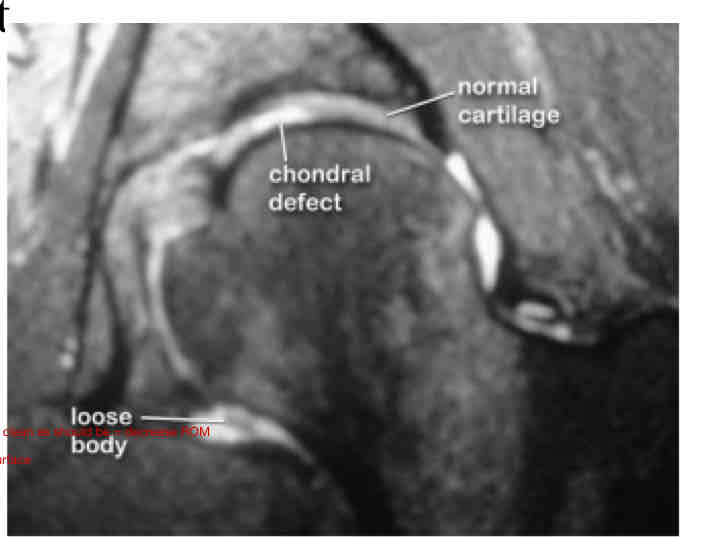
Chondral Defect: S/S
What are the 3 main S/S of Chondral Defect?
Dull pain
Increased w activity
Decreased ROM
Locking/Catching
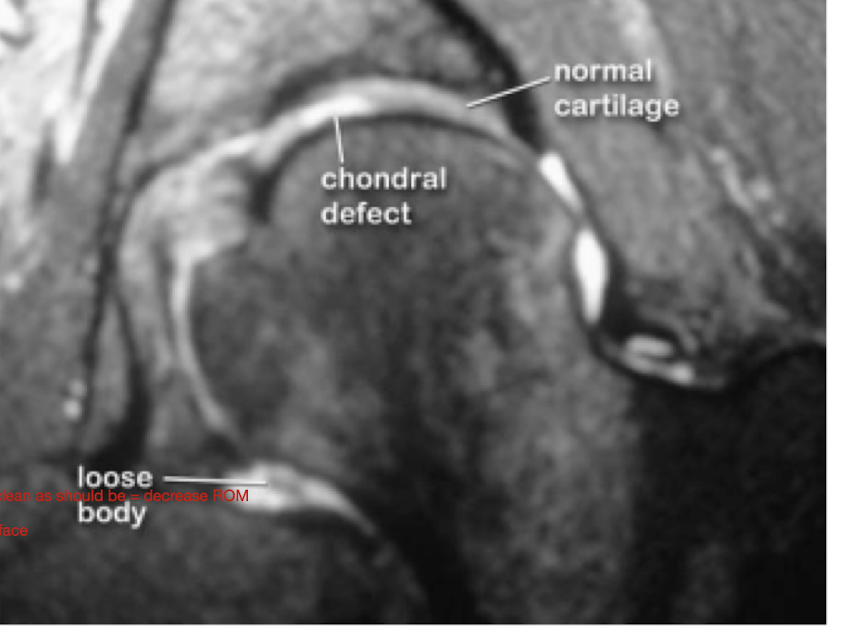
Chondral Defect: S/S
What activities would this pt complain of having difficulty doing?
3
Stairs
Siting in Low Chairs
Driving
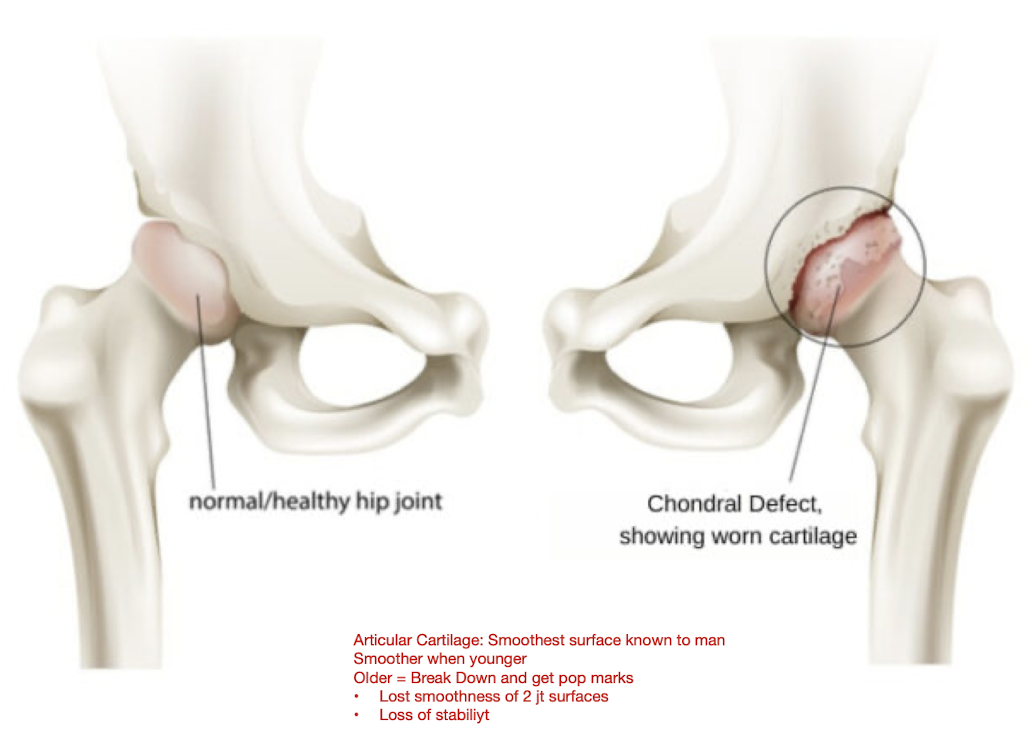

Femoral Acetabular Impingement (FAI):
Define:
Pincer:
Cam:
Combined:
Pincer:
Extra bone on the acetabulum
Cam
Extra bone on the femoral head
Combined
Both cam and pincer are present
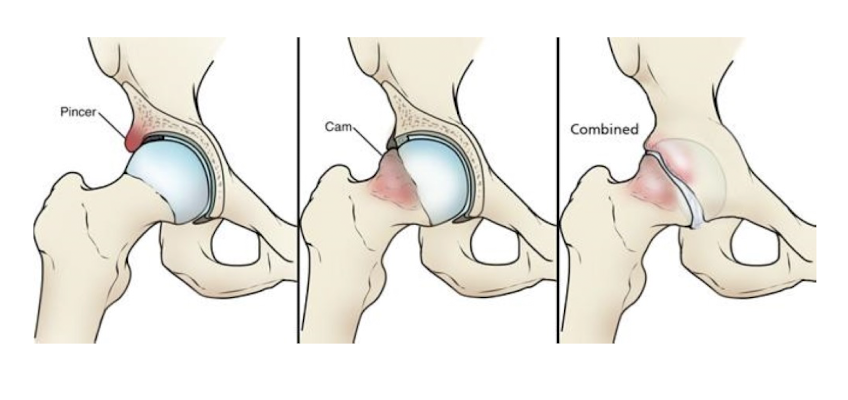
Femoral Acetabular Impingement (FAI) S/S:
2 main S/S:
Pt will have pain performing what 3 actions?
2:
Stiffness
Limited pain free ROM
Dull ache to sharp stabbing pain
3:
Squatting (MC Complaint)
Turning
Flexion
Knee

Meniscus Tears: MOI
6 main MOI
Shear stress
Compression
Rotary stress
Degeneration
Esp older pts
Changing directions
Pivoting
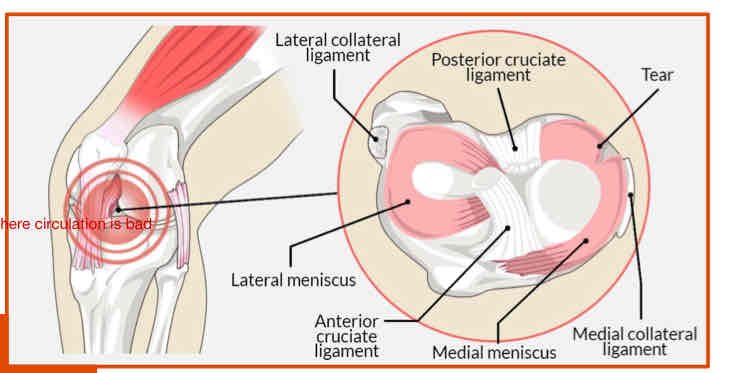
Meniscus Tears:
Which meniscus is more susceptible to injury?
Why?
Medial
Ground reaction force (GRF) loads on medial meniscus
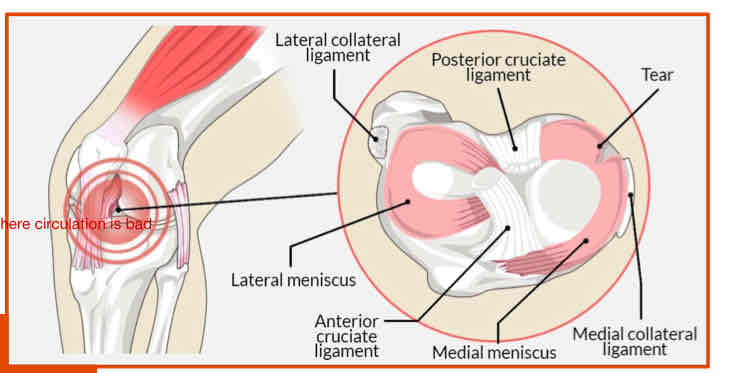
Meniscus Tear:
4 main complaints:
4:
Getting out of the car
Pop/Click
Jt Line Pn
WB

Meniscus: Types of Tears
Describe:
Flap:
Progression of…
Radial:
Tear of…
Degenerative:
Pop
Flap
Progression of Radial Tear
Radial
Tear of inner portion to outside
Degenerative
Older pts
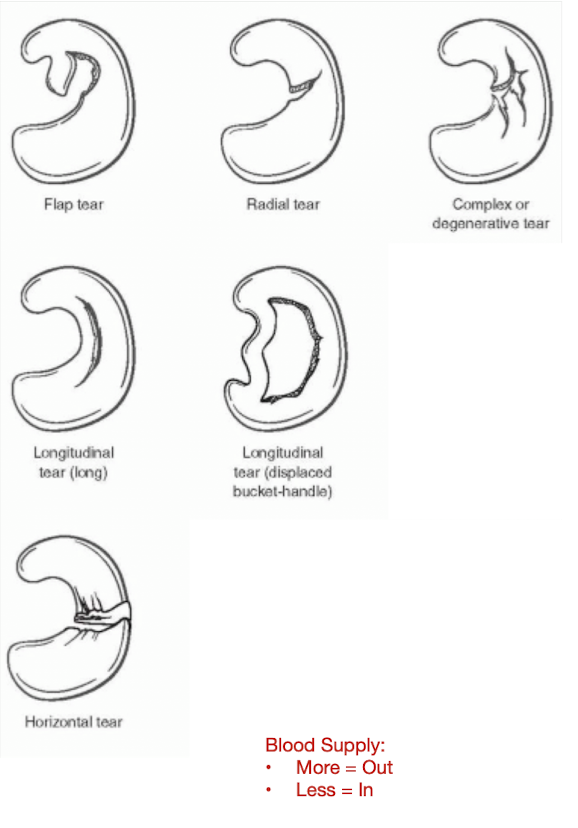
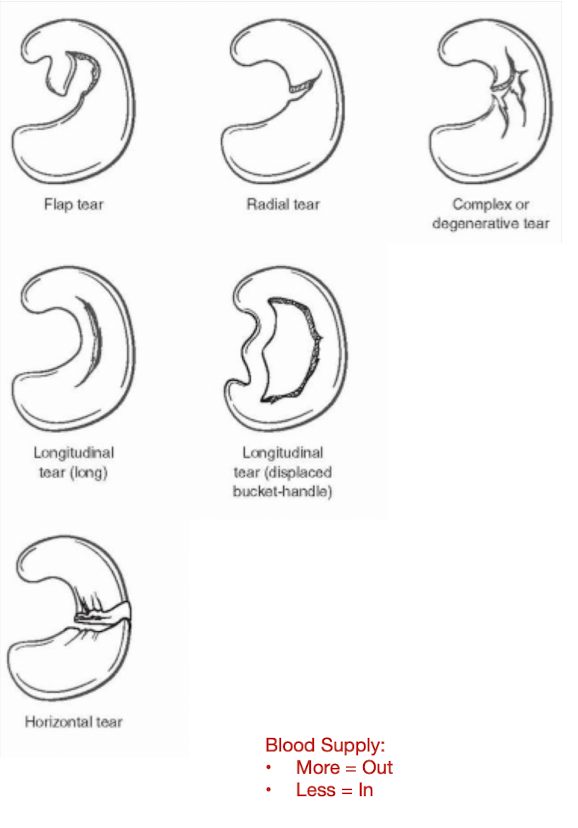
Meniscus: Types of Tears
Longitudinal:
Associated w…
Bucket Handle:
Progression of…
Horizontal:
Moves…
Longitudinal
Associated w ACL tears
Bucket Handle
Progression of Longitudinal Tear
Horizontal
Moves inside to outside of meniscus


Meniscus: Blood Supply
Red Zone =
White Zone =
Red:
Blood Supply (Outside)
White:
Lack of Blood Supply (Inside)
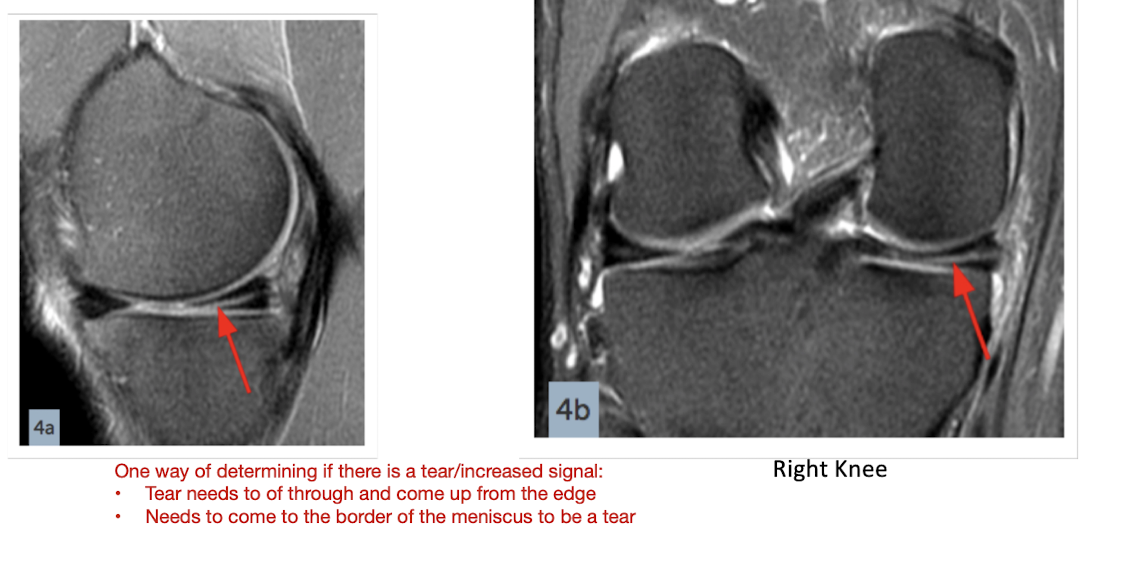
Horizontal Tear:
___ with the Tibial Plateau
___ the Meniscus in ___
Parallel
Divides; Half (Top and Bottom Half)
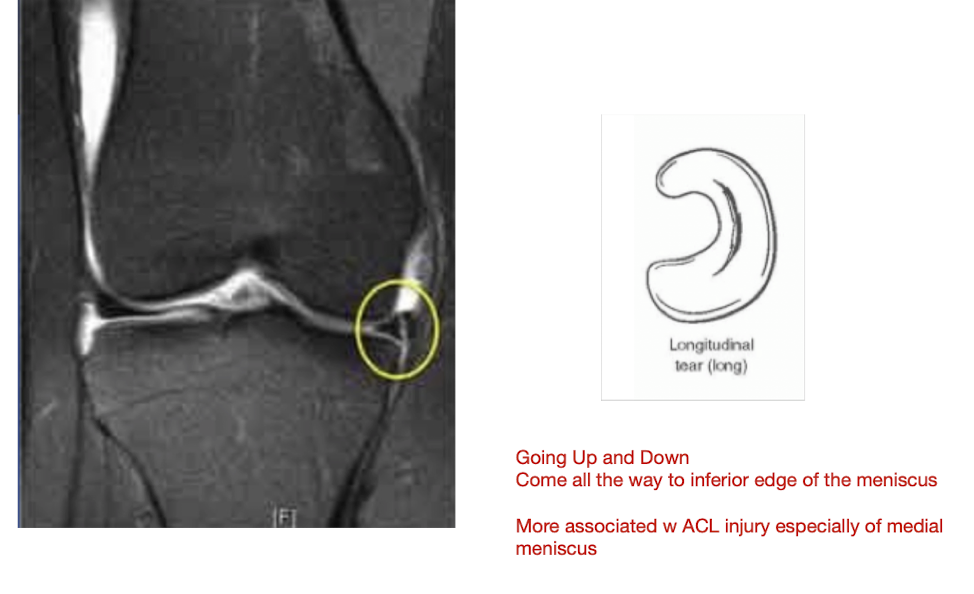
Longitudinal Vertical Tear:
___ to the Tibial Plateau
___ to the what?
Perpendicular
Parallel; Long Axis of the Meniscus
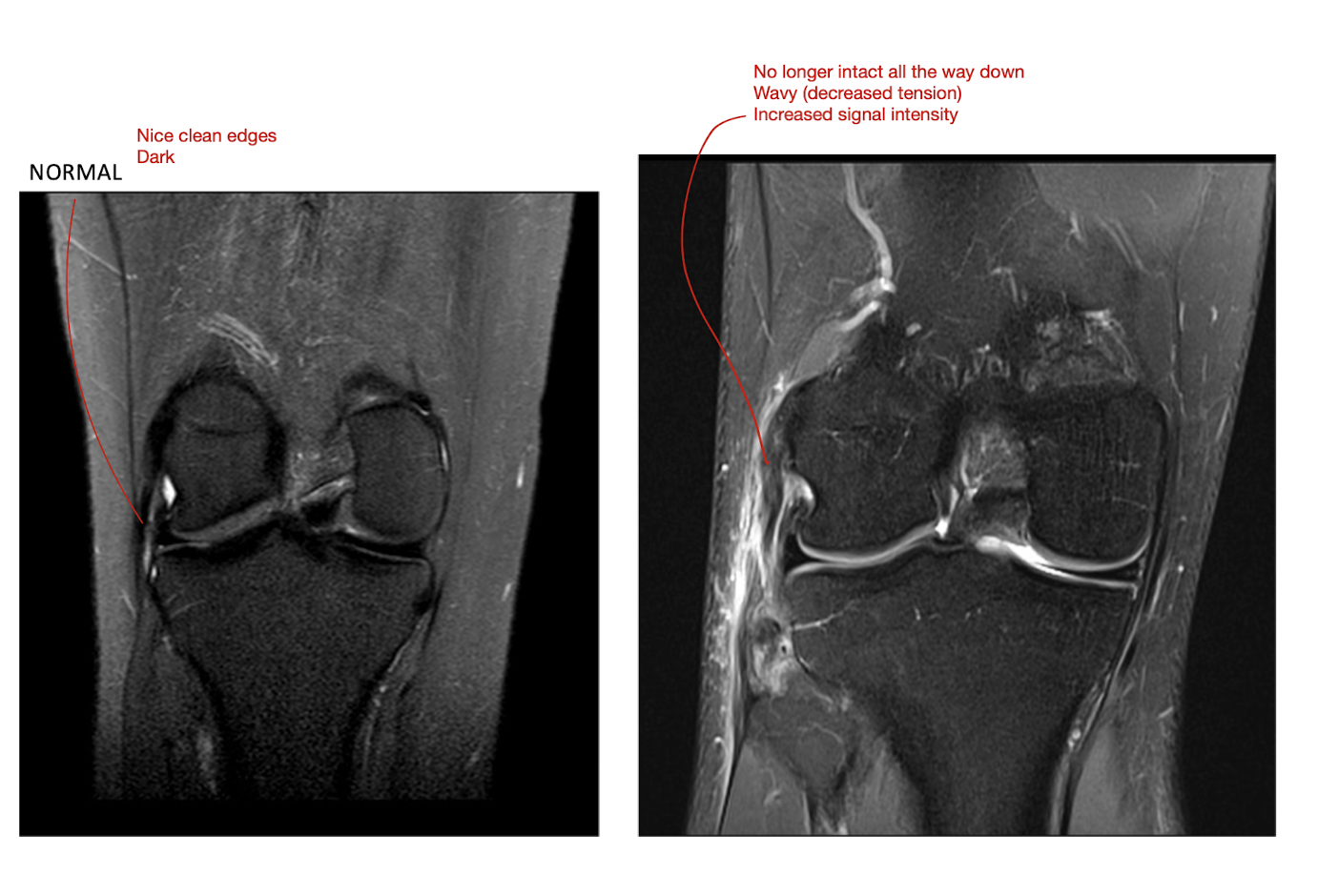
LCL Pathology:
What are the 3 Grades?
Grade 1: Mild
Microscopic tears from stretching
Grade 2: Moderate
Over stretching w partial tear w mild to moderate instability
Grade 3: Severe
Full Tear of the Ligament
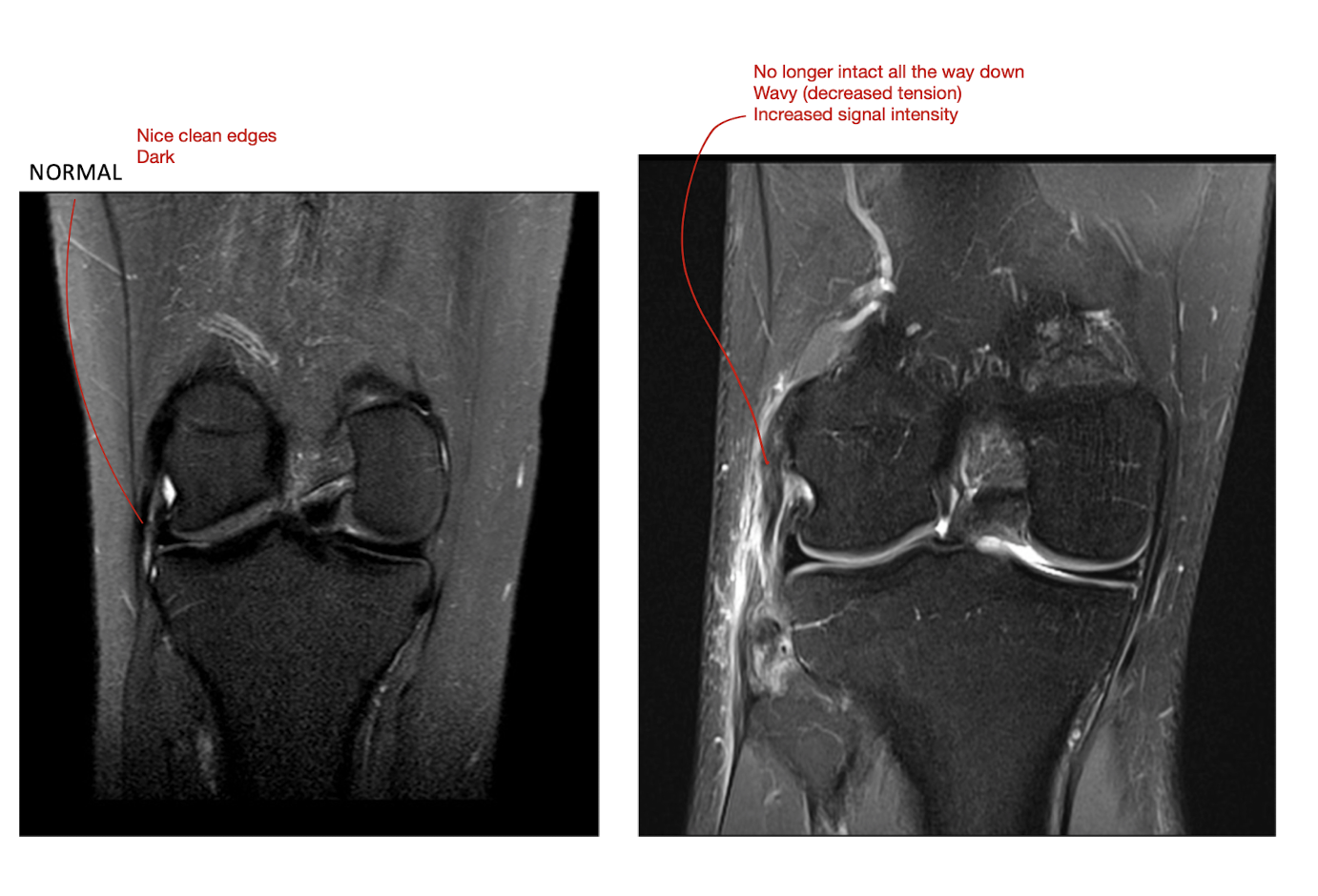
LCL Pathology: MOI
2 main MOI
Twist or Rotation
Strong VARUS Stress

LCL Pathology: S/S
4 main S/S
Swelling in LAT Knee
Loss of Knee Motion
Lateral Jt Line Pain
Difficulty w Cutting or Changing Directions
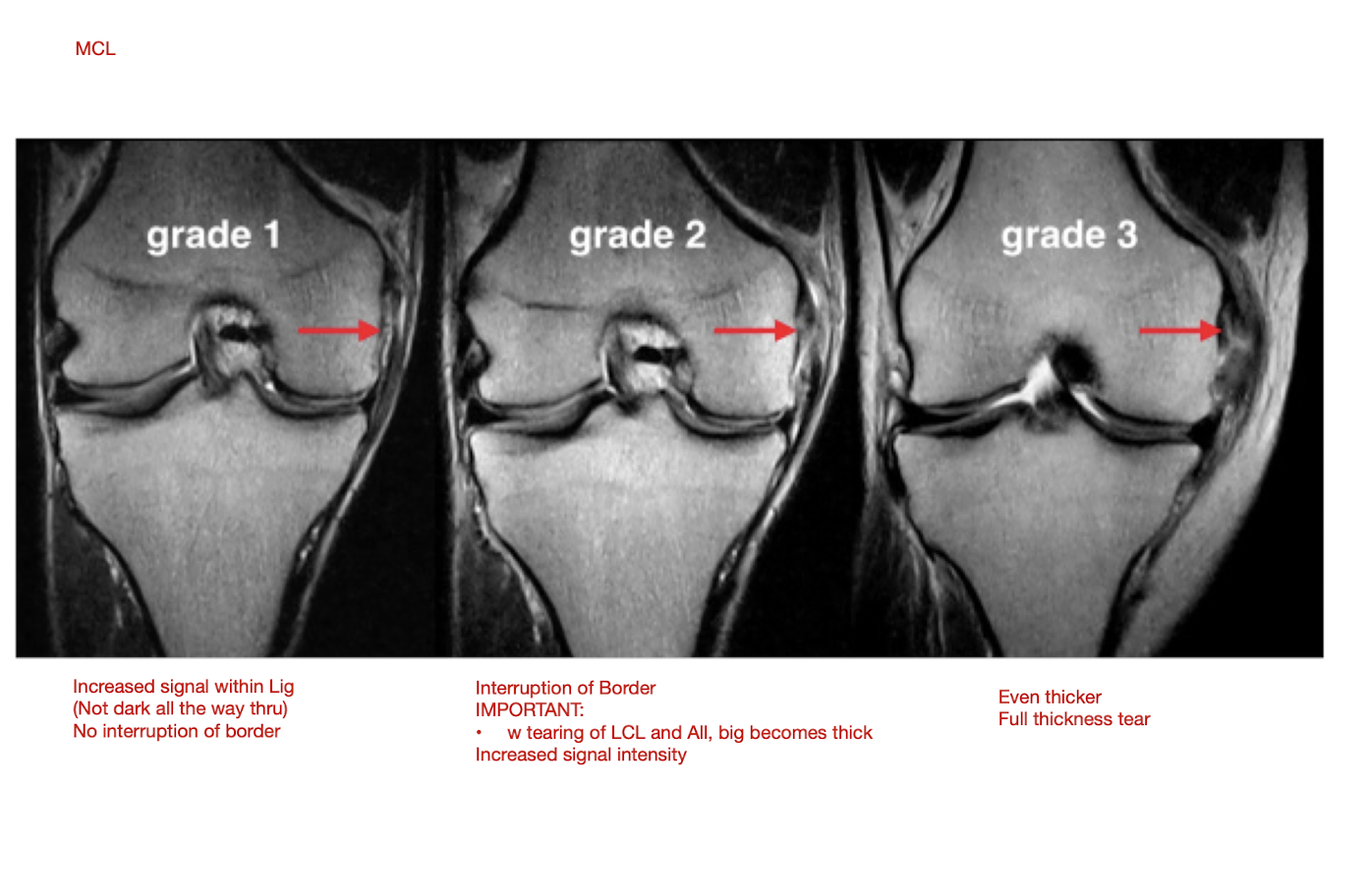
MCL Pathology:
What are 3 Grades?
Grade 1: Mild
Microscopic tears from stretching
Grade 2: Moderate
Over stretching w partial tear w mild to moderate instability
Grade 3: Severe
Full Tear of the Ligament

MCL Pathology: MOI
2 main MOI
Twisting or Rotation
Strong VALGUS Stress
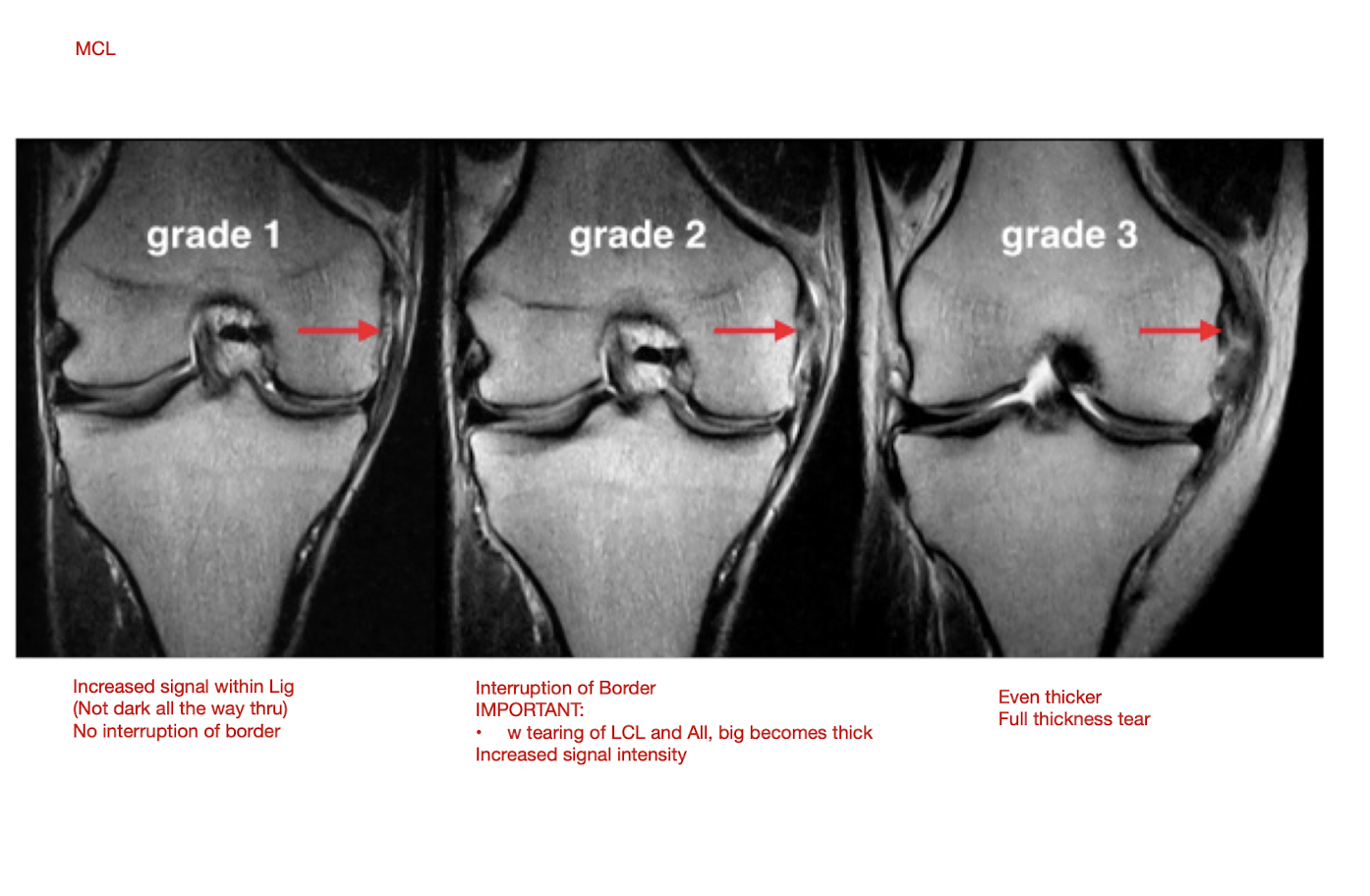
MCL Pathology: S/S
4 main S/S
Swelling in MED Knee
Loss of Knee Motion
Medial Jt Line Pain
Difficulty w Cutting or Changing Directions

ACL Pathology: MOI
4 main MOI
Femoral IR, Valgus, Tibial Abd Non-Contact Injury
Knee Hyper Extension Non Contact
Blow on side of Knee
Jump Landing
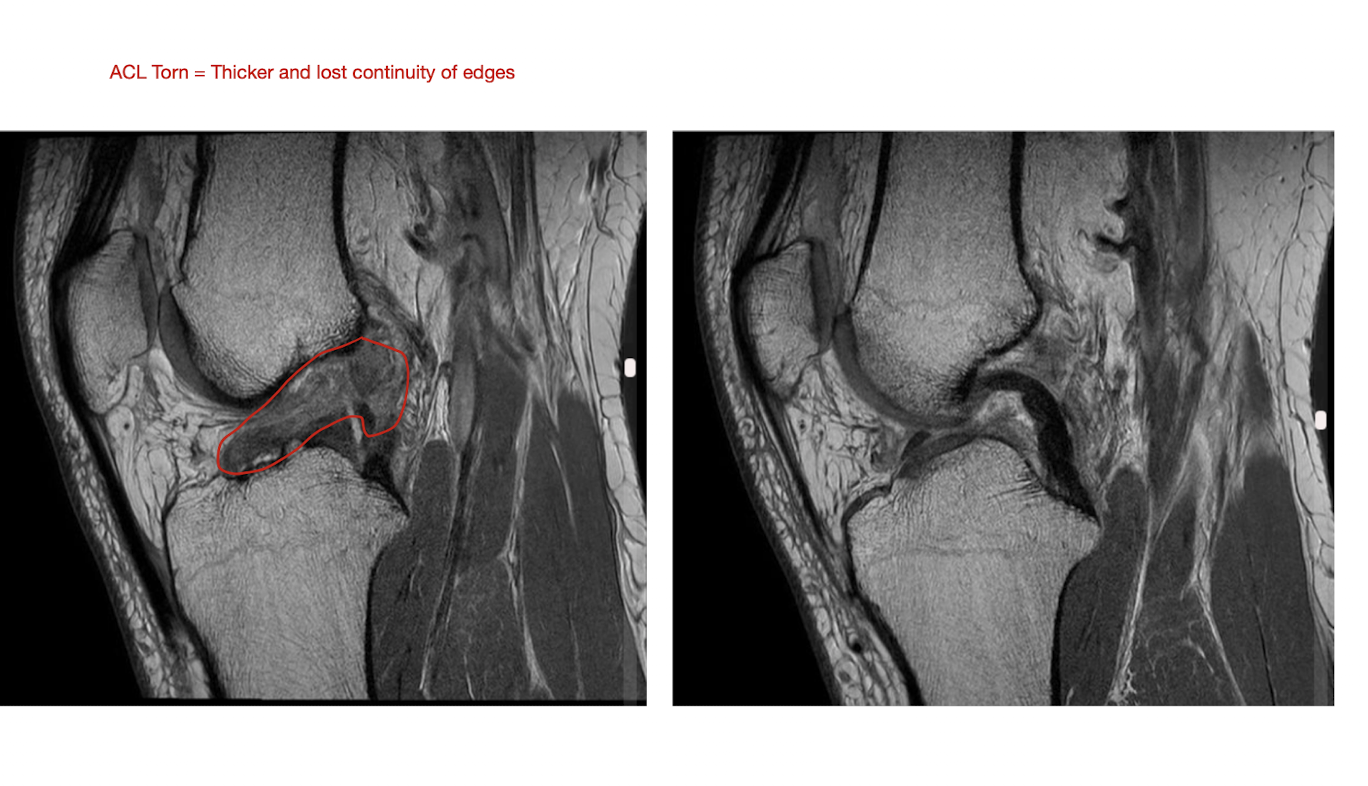
ACL Pathology: S/S
4 main S/S
Swelling in Knee Jt Capsule
Loss of Knee Motion
Hearing a “Pop”
Knee Giving Out
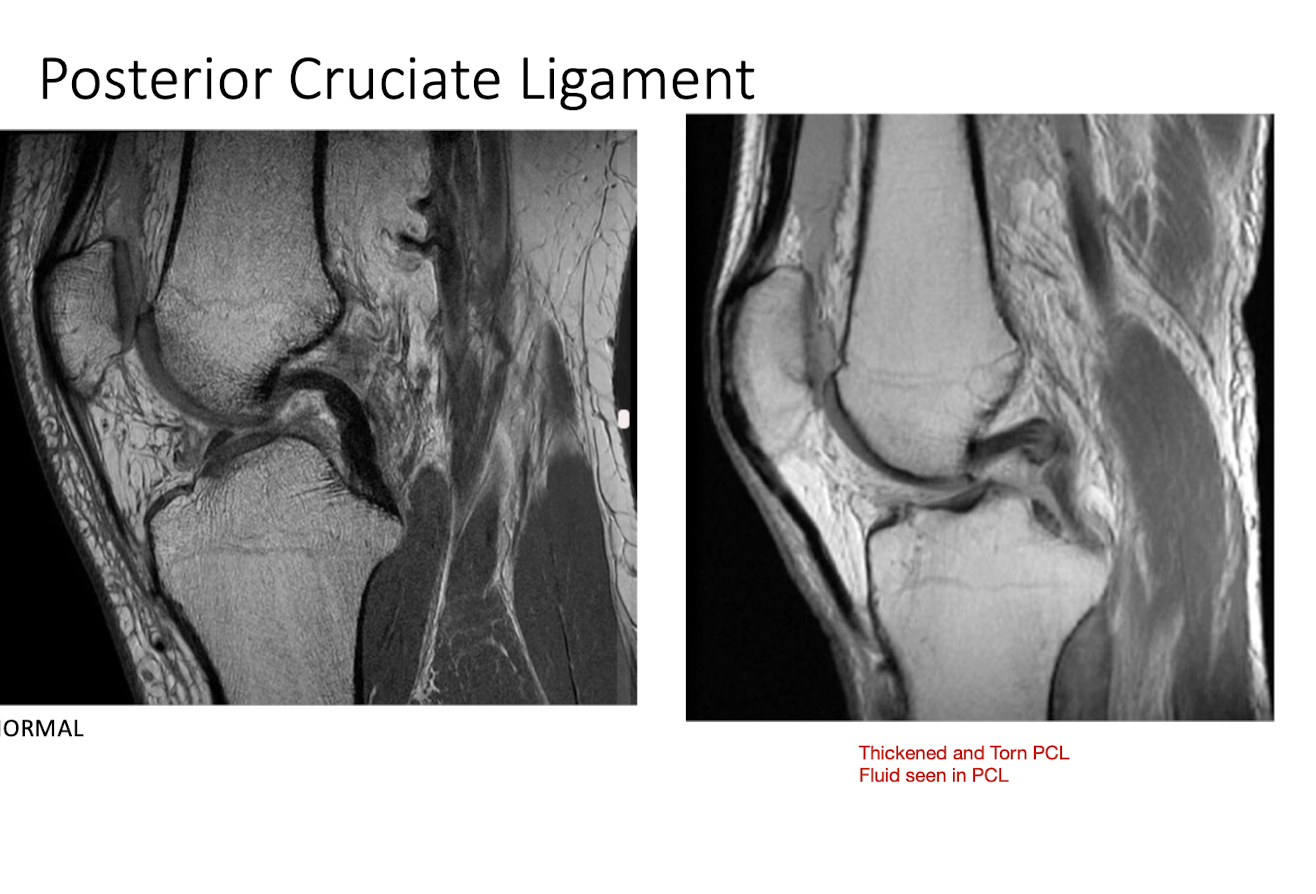
PCL: MOI
3 Main MOI:
Car Accident (Dashboard Injury)
Fall
Blow at Ant Knee


Patella Tendon Pathology: MOI
4 main MOI
Repetitive Jumping
Quad Dominance
Too Much Too Soon (overuse)
Running
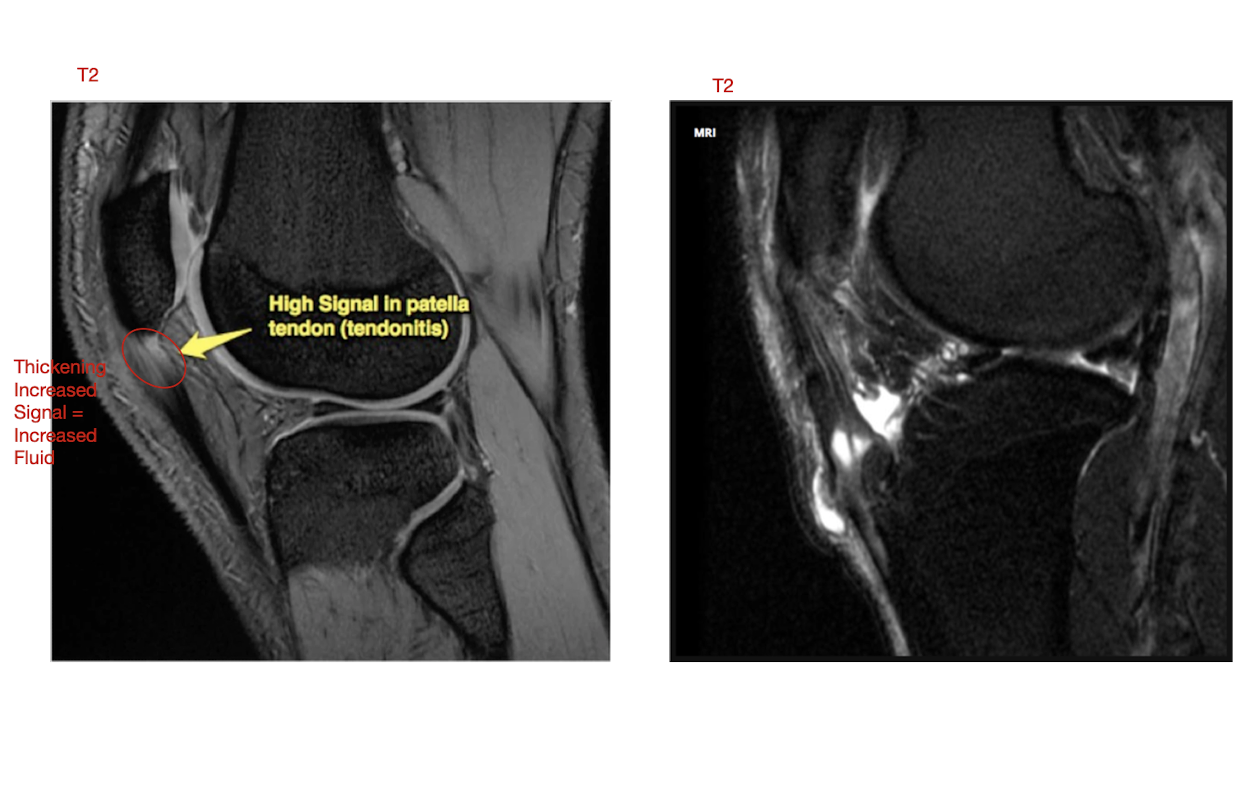
Patella Tendon Pathology: S/S
4 main S/S
Anterior Knee Pain
Anterior Knee Swelling
TTP
Pn During or After Activity
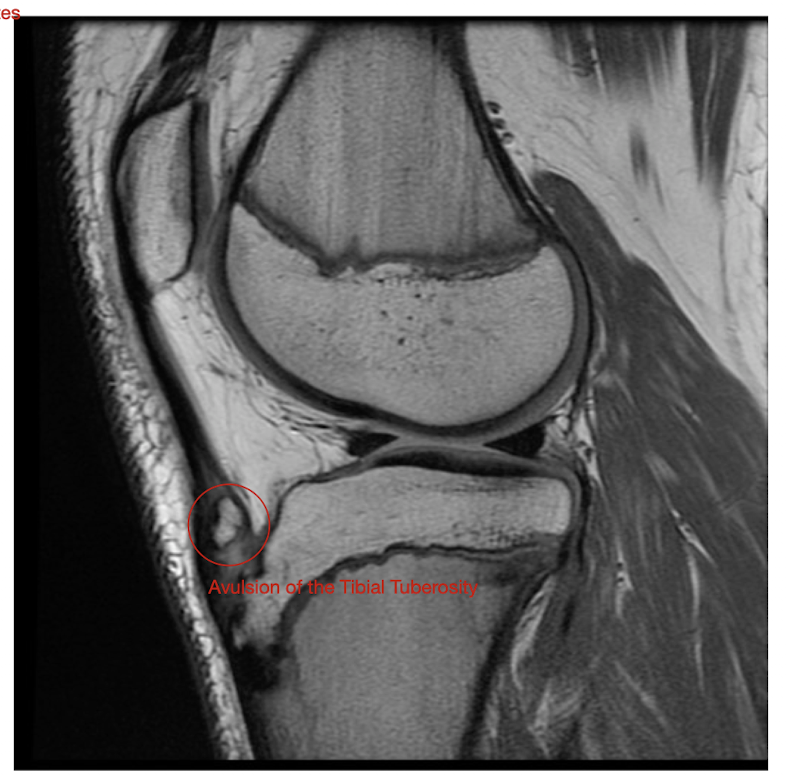
Osgood Shlatter’s:
Main Pop:
4 MOI
Pop: Young People (14-18)
MOI:
Overactivity of Quad
Quad Tightness
Limited ROM
Pn w Walking/Stairs
Shoulder
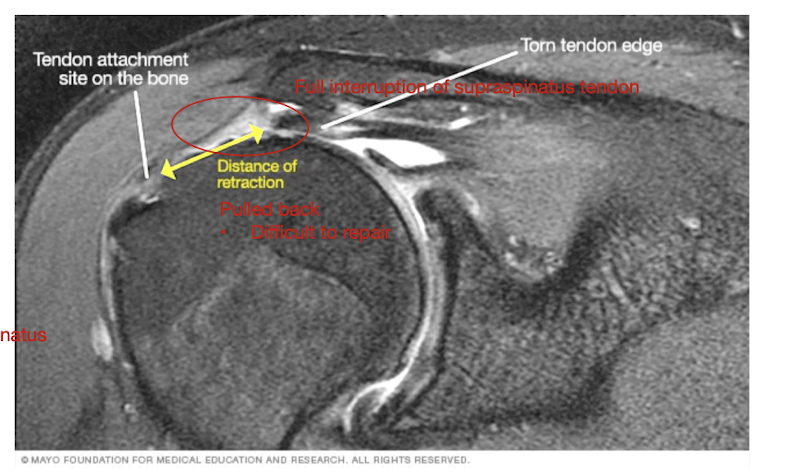
Rotator Cuff Tears: MOI
Acute MOI (3)
FOOSH
Throwing
Heavy Lifting

Rotator Cuff Tears: MOI
Degeneration MOI (4)
Impingement
Bone Spur
Repetitive Injury
Poor Blood Supply
Esp w Supraspinatus

Rotator Cuff Tears: S/S
4 main S/S:
Lateral Shoulder Pain
Upper Trap Pain
Weakness
Pain w Overhead Activity
Shoulder Labral Tears: MOI
4 main MOI:
FOOSH
Repetitive Overhead Activity
Thrower
Dislocation
Degeneration
Shoulder Labral Tears: S/S
4 main S/S
Popping or Clicking
Feeling of Instability
Deep Ache in Shoulder Region
Stiff Shoulder in the Morning
What are the 2 main types of Shoulder Labral Tears?
Superior Labrum Anterior to Posterior Lesion (SLAP)
Bankart Lesion
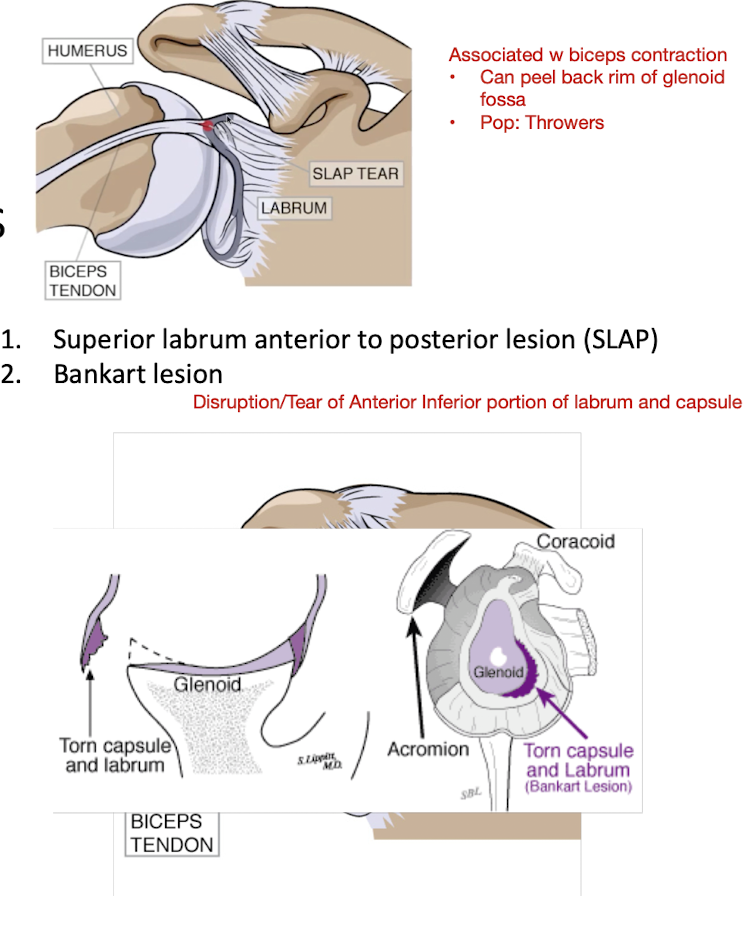
Lumbar

Degenerative Changes:
5 main Degenerative Changes of the L/S:
Loss of Disc Height
Loss of Disc Fluid
Bone Edema
Schmorl’s Node
Disc Bulge

L/S Degeneration:
3 main Movement Faults
Poor shock absorption during gait
Excessive lumbar flexion during fed flexion (sitting)
Excessive lumbar rotation during functional activities
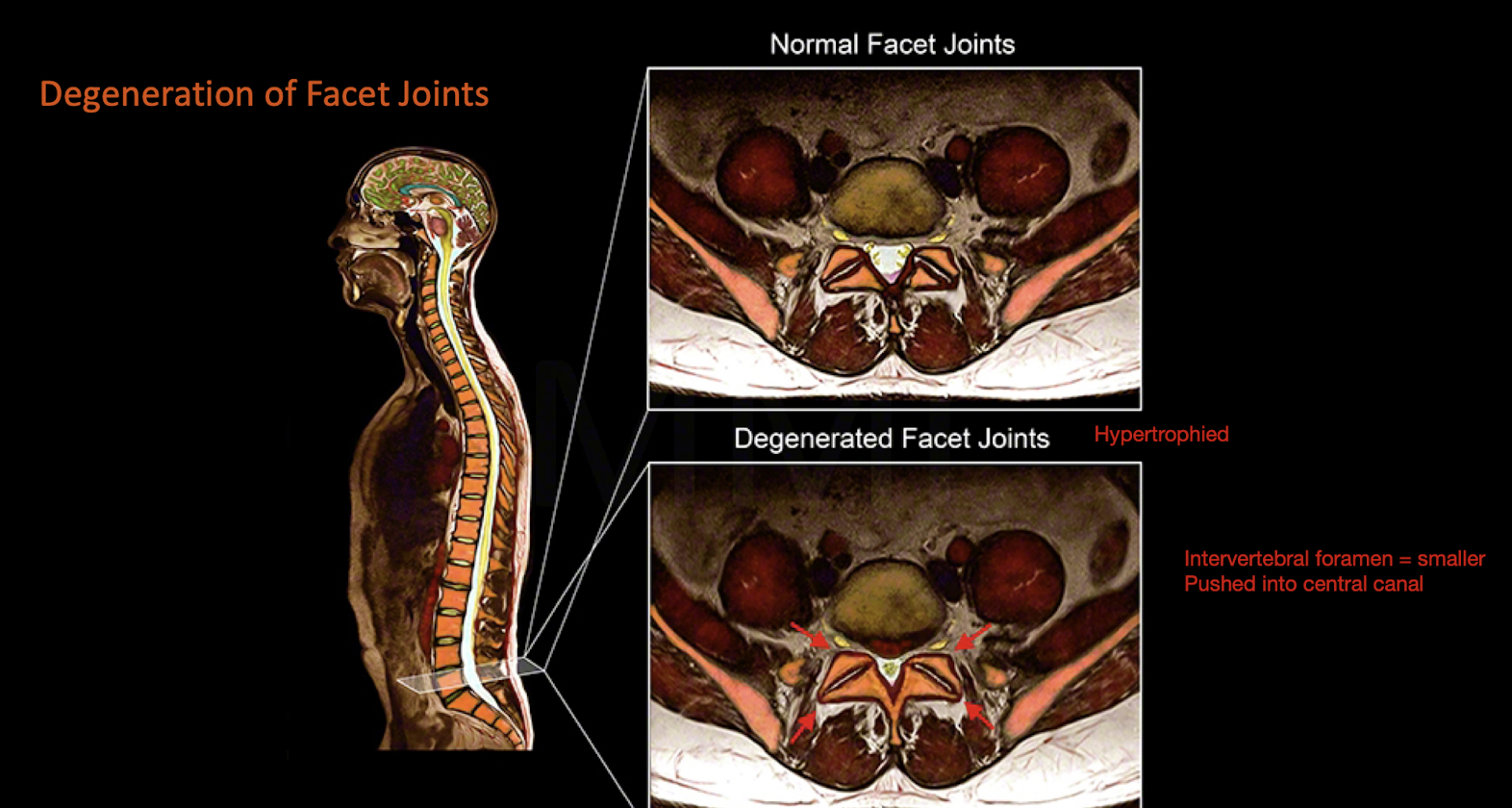
L/S Degeneration:
3 main Impairments
LE weakness
Limited hip mobility
Jt of Hamstring Tightness
Coordination deficit